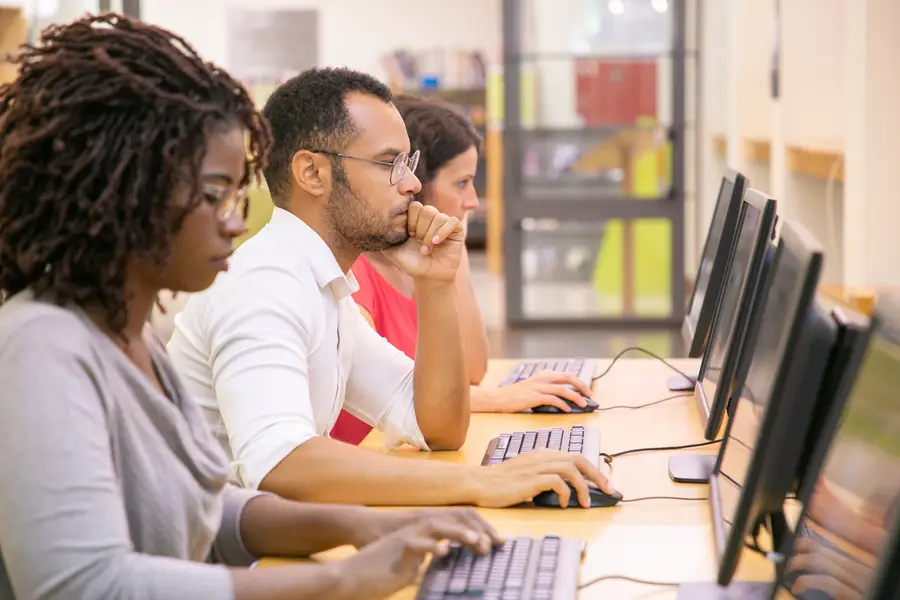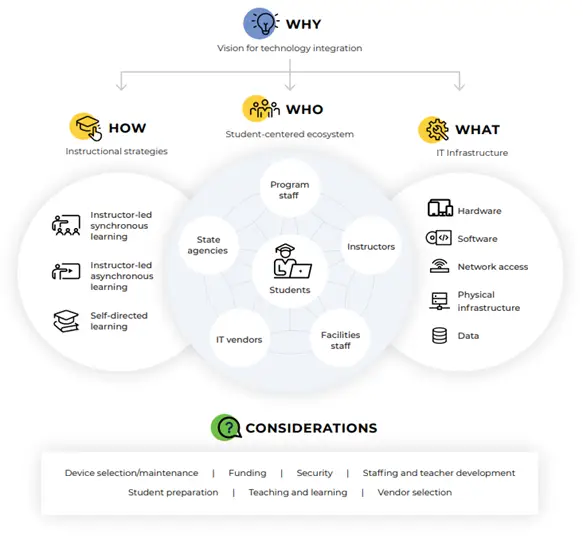From Access to Use: Building a Student-Centered Educational Technology Ecosystem for Correctional Education
Having access to and being able to skillfully use technology is no longer a luxury, but a requirement for navigating daily life in the United States. We encounter and interact with technology in so many contexts, including education. Educational technology has profoundly changed participation in education programs at all levels. Effective educational technology use can expand access to education programming and content; provide new tools for instructors to communicate with students, teach lessons, and increase learning; and ensure students develop the expertise in using the technology they need for success in further education, work, and life. Students who are participating in education while incarcerated need the same experience with technology, both to expand their access to quality education programming and to improve their digital literacy skills in preparation for release.
“Providing access to current technology to incarcerated students is an important equity and reentry issue.” -Building the Technology Ecosystem for Correctional Education: Brief and Discussion Guide, p. 31
Despite advances in recent years, in part due to pandemic recovery efforts and legislation to expand postsecondary education opportunities for individuals impacted by incarceration, access to and use of educational technology in corrections facilities lags far behind that of the community. To close this gap, some correctional education leaders are creating policy and technical environments that enable the use of quality and secure technology to advance teaching and learning. As described by RTI in Building the Technology Ecosystem for Correctional Education: Brief and Discussion Guide, developed for the U.S. Department of Education, this starts with developing a vision for the planned instructional experience for students.
Putting Students at the Center of Educational Technology Decisions in Corrections
As depicted in the Correctional Education Technology Ecosystem (see graphic), the vision for educational technology integration should guide decisions about what technology to use and how. This requires an understanding of the technical infrastructure, instructional approaches, and other supports needed for implementation—or the components of the technology ecosystem for correctional education. While there is no one-size-fits all solution for building the ecosystem, students belong at the center.
In practice, this means involving students and instructors in determining where students will have access to the technology, what preparation students will receive to build their digital literacy skills, and how the technology aligns with that used in the community. For example, will students be able to use their devices and access course content in both the classroom and in housing units? What technology is being used by education programs and employers in the community? How is student feedback gathered to inform ongoing technology use for correctional education?
Correctional Education Technology Ecosystem
Expanding from the Educational Technology Ecosystem to the Classroom
Building a student-centered educational technology ecosystem requires partnerships between correctional education and IT administrators, especially to ensure that technology use meets security requirements and quality criteria. It also involves training instructors on how to use the specific technology and on strategies for effectively integrating technology into instruction. Finally, for students to fully benefit from using technology, they must be given opportunities to develop and strengthen their digital literacy skills and to have expanded access to learning devices and platforms.
More research is needed to identify best practices and strategies for developing and sustaining the ecosystem. And, once the ecosystem is in place, what does quality technology use look like in the correctional education classroom? RTI, with funding from the U.S. Department of Education, will be exploring this question through case studies of three correctional education programs that illustrate the strategies and metrics for integrating technology into classroom instruction and providing technical assistance activities and resources to expand technology use throughout state corrections systems.
It is no longer a question of if education technology can be used in a correctional education setting, but how we integrate education technology into correctional programs to provide quality instruction. Ultimately, technology offers a tool for providing access to education programs and content with the goal of improving outcomes for correctional education participants after release. Learn how to advance a student-centered technology ecosystem for correctional education here.





